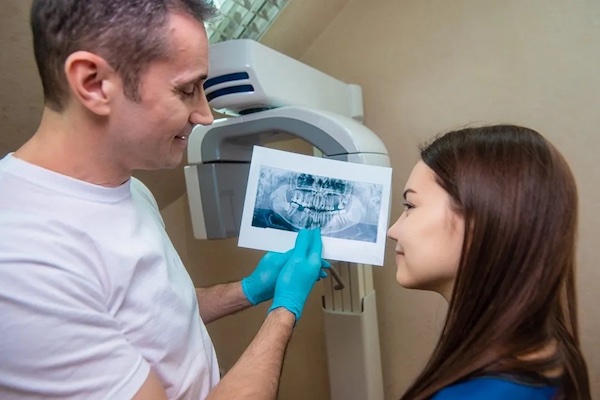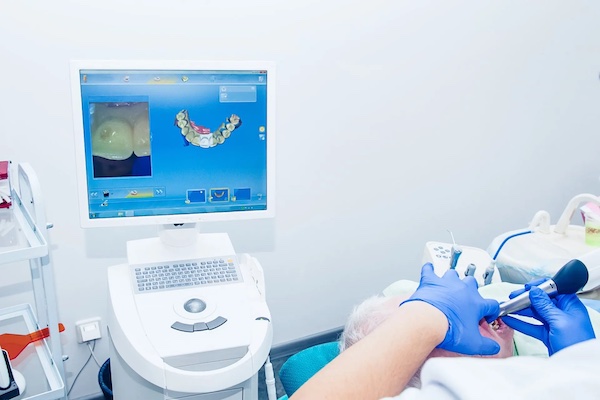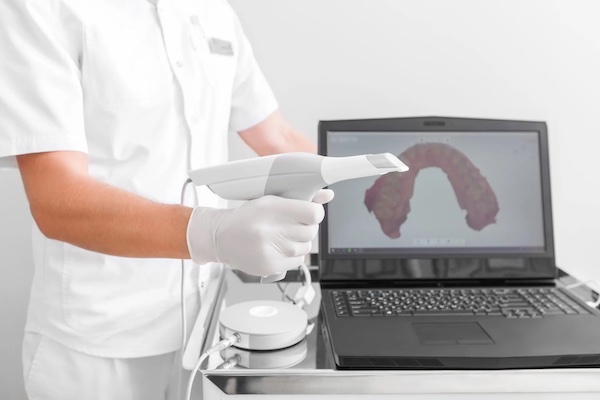Dental technology has introduced innovative advancements over the last few years, making dental appointments quicker and much more thorough. Some of the laborious tasks of dentistry have been simplified and the process for several of these duties has proven more efficient.
Technology has already altered our everyday lives at home and in the workplace, making it only a matter of time until modern developments changed how patients perceived a routine dental appointment. Here are the pieces of technology we have in our office.
Digital X-Rays

Introduced in 1987, nearly 90 years after traditional x-rays came to fruition, digital radiography combined the power of computer technology with electric sensors and tiny bursts of radiation. Rather than printing the results on film, images form almost as soon as the sensors are placed in our mouths, projecting on a computer screen. Digital x-ray technology does demand additional training for dentists, though the majority of practitioners are adamant that the advantages are worth the commitment. Today, a lot of dental offices only offer patients digital x-rays because, in multiple ways, it is the superior option to traditional radiography.
- Less Expensive | Digital x-rays will generally cost you less than the traditional alternative because the cost of film to develop images for the latter adds up. In contrast, digital x-ray imaging projects right onto our computer.
- Better Storage | Since these digital x-ray images are transferred to a computer system, it allows for easier storage of your oral health records. Your data can be transferred from one dentist to another without any medical data being lost in the exchange.
- Finer Images | Digital x-ray images produce a better resolution than their traditional counterpart. Also, old-fashioned x-rays can only project images in 25 various shades, whereas a digital image can reveal up to 256 shades of grey. Digital radiography also has the advantage of accessing more angles within our mouths, providing a streamlined view of a patient's entire oral structure. With the assistance of computer programs, dentists can even enhance the digital images further, for a focused view.
Intraoral Camera

About the same size as a marker, intraoral cameras are digital imaging tools used to create high-resolution images of your teeth, gums, and other hard-to-reach places in your mouth. Intraoral cameras help dental professionals detect dental issues, such as tooth decay, periodontal disease, and oral cancer. Other great benefits include:
- You can see, with precision, where you need to focus on brushing or flossing.
- You can see the difference before and after treatment.
- You can see magnified images of your teeth and gums, which helps dental professionals diagnose gum disease and cavities, and if caught early, can help prevent them.
- These photos provide proof for insurance companies to give you the coverage you need.
- Intraoral cameras also limit your time in the office because the images are produced in real-time, and the outcomes are available almost immediately.
Medit Intraoral Scanner

Medit is the newest form in digital imaging. It provides patients with a safe and complete oral impression without the use of radiation. The use of Medit is also non-invasive and quite simple. The technology allows our patients to be in-and-out of the office in a few short minutes. This piece of equipment is environmentally friendly too, meaning no films, chemicals, or disposals of molds. We receive instant digital images of your full mouth which helps speed along your treatment plans. Experience the joys of living in the digital age.
